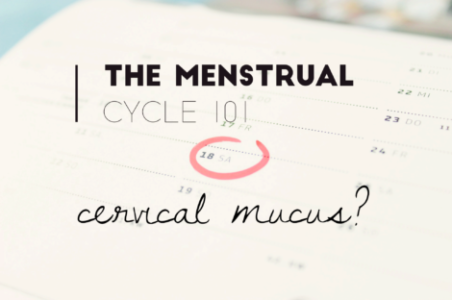Why cervical mucus is not talked about outside of the context of fertility is something I will never understand!
I remember when I went off the birth control pill for the first time in my early 20s. I had been on it since I was 15 years old because of debilitating cramps, so I really had no idea what a ‘normal cycle’ was. The first month I didn’t notice many changes but by the third month I had noticeable changes in my discharge, I know, overshare! But the point of this whole story is, I thought that I had some kind of yeast infection, or that something was wrong with me. No one told me about normal cyclical changes in my mucus production until I got in see my Ob Gyn. He just brushed me off and said, oh that is normal. We can talk about it more when you want to get pregnant.
I left that visit totally mystified. I trusted that it was normal, but why did it happen!
This is a situation I see in so many of my patients as well. One even taking Monistat every month because she was worried about a yeast infection!
Well I am here to tell you ladies, cervical mucus changes are normal! What we will cover today actually breaks down the ins and outs of cervical mucus. Why we need it, what information it gives us, how it affects your fertility, and beyond.
What is cervical mucus?
Cervical mucus is a blanket term for mucus that is created to help protect your uterus from bacteria, infections and other pathogens. This mucus takes different forms and has additional functions at certain times of the menstrual cycle.
Cervical mucus is composed of 95% to 99% water, the remainder is made of enzymes, ions, proteins, bactericidal proteins and mucins. Normally, the pH of cervical mucus is nearly 7.0 and the less acidic environment of cervical mucus is favorable for sperm viability. The mucin component of the cervical mucus is critical as it provides the gel-like property that changes throughout the month.
As we previously discussed here, estrogen and progesterone levels change throughout the menstrual cycle. As these hormones change they are affecting not only the uterine lining and the ovaries, but they also change the cervical mucus.
Ovulatory Mucus
During the follicular phase, increasing levels of estrogen stimulate the cervical glands to increase mucus production. The nature of the mucus is bulky and viscous in the initial follicular phase. But prior to ovulation changes in estrogen stimulate a large quantity of clear, watery and stretchy cervical mucus to be released1,2. This generally happens from the 10th day of the menstrual cycle until the 14th to 16th day, which is when women ovulate on the typical 28 day cycle. This is commonly known as egg white mucus, because it looks like an egg white.
During ovulation the elasticity of the cervical mucus is such that it can be extended up to 10-15cm long, if stretched between the fingers. During ovulation, the cervical mucus flow increases up to 30 fold more than in the initial follicular phase. The heavy flow of cervical mucus and watery nature assist sperm to float into the fallopian tube and to be able to fertilize the ovum (egg)1,2. Kind of like a slip and slide for sperm! Different trace elements also exist in the cervical mucus, things such as zinc, copper, iron, manganese, selenium, sodium and chloride ions, glucose and amino acids. We don’t know the true value of these things yet, but some people believe that they provide nourishment to the sperm and/or ovum1. (How smart are our bodies?!)
Post Ovulation Mucus
After all of the fun of ovulation, the luteal phase begins (which we will chat about next week) and there is a decrease in estrogen and an increase in progesterone levels. This increased level of progesterone functions to decrease cervical mucus and actually harden the cervix3,1. The nature of cervical mucus becomes thick, opaque and viscous. This thick mucus blocks a sperms migration into the uterus, and therefore prevents fertilization.
Overall, cervical mucus is normal and healthy! We should be able to detect changes in cervical mucus throughout our menstrual cycle and even be able to predict ovulation based on it.
If you are not getting changes in cervical mucus then this can indicate a hormonal imbalance. I say CAN because some women are ovulating monthly, have ideal hormonal levels and still don’t have cervical mucus changes. If you are concern then always ask your medical doctor, or Naturopathic Doctor, to help you assess your hormones!
References
- Nakano, F. Y. et al. Insights into the role of cervical mucus and vaginal pH in unexplained infertility. Med. Express 2, (2015).
- Brunelli, R. et al. Globular structure of human ovulatory cervical mucus. FASEB J. 21, 3872–6 (2007).
- Reed, B. G. & Carr, B. R. The Normal Menstrual Cycle and the Control of Ovulation. Endotext (MDText.com, Inc., 2000).

